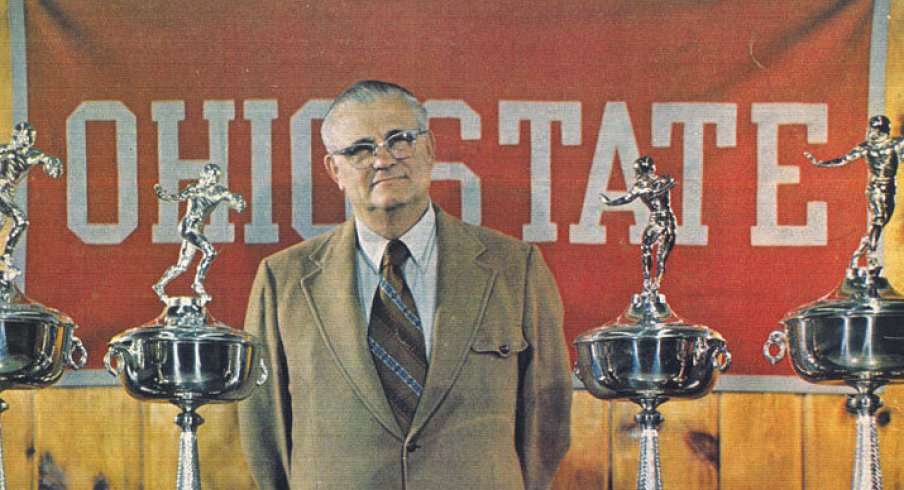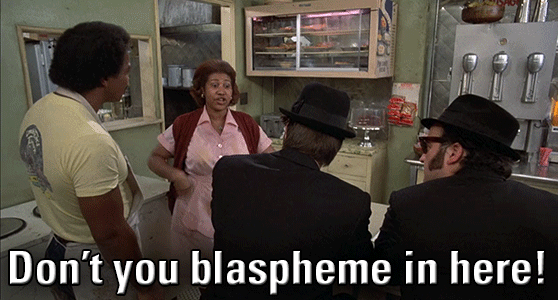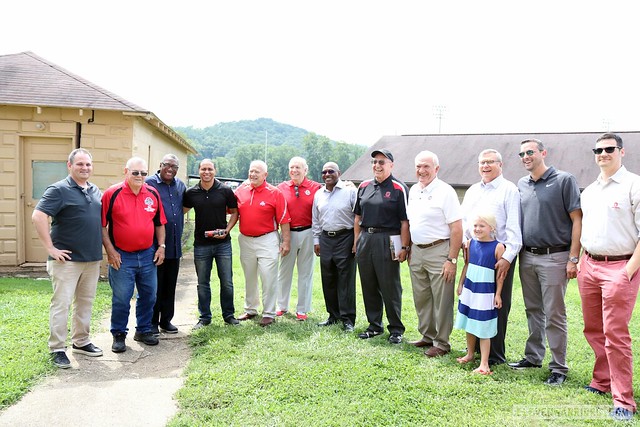FILM STUDY FLASHBACK: WOODY'S FORCED ADAPTATION TO THE I-FORMATION MADE OHIO STATE A MODERN NATIONAL POWER
With three national championships in his first 11 seasons at Ohio State, Woody Hayes had made the Buckeyes one of America's most respected and well-known programs.

But after pummeling opponents for a decade with his "three yards and a cloud of dust" offense running out of the old 'T-formation,' the Buckeyes lingered in mediocrity for the first time in Hayes' career. From 1962-67, Ohio State failed to win a single conference title and losing at least two games per season, bottoming out in 1966 with a 4-5 record.
There were a number of factors that pulled Hayes' program back down from the top of the mountain. Attracting only in-state players meant Hayes couldn't match the talent found on other powerhouse programs that had begun to recruit nationally. Spurred by the worst season in his career since his initial 2-6 campaign at Denison University 20 years prior, Hayes spent the winter of 1967 expanding his scouting footprint, bringing in out-of-state talents like Jack Tatum, John Brockington, Jan White, and Tim Anderson, all of whom would go on to plant All-American trees in the Buckeye Grove.
But Hayes also needed to look inward. Though his' T-formation system certainly brought great success, its biggest downside may not have been its conservative nature, but its rigidity. There was little room to accommodate the talents of any specific individual, as evidenced by the first true star Hayes ever coached.
BRING WOODY HOME ›
Vic Janowicz won the Heisman trophy in 1950 as the focal point of Wes Fesler's single-wing offense, running, throwing, and kicking his way to nearly 1,000 yards of offense at a time when such a feat was rare. Yet once Hayes arrived the following season, Janowicz was assigned to play left halfback, severely limiting his touches and ability to affect the game. The reigning Heisman-winner rushed for 376 yards and threw for only 74 more as his team went a mediocre 4-3-2 in Hayes' inaugural season in Columbus.
A decade later, little had changed. Paul Warfield would go on to become one of the greatest receivers in NFL history, catching 427 career passes and going to eight pro bowls before earning a spot in the Pro Football Hall of Fame. Yet as a member of Hayes' Buckeyes from 1960-63, Warfield was a glorified blocker as a halfback in the T, never gaining more than 540 yards from scrimmage or scoring more than six touchdowns in a season from his fixed role in the OSU system.
The focal point of Woody's T-formation system was the fullback, a big-bodied bruiser who rammed forward into the mass of bodies between the tackles, picking up efficient, though rarely extended, gains from scrimmage. Athletic ball-carriers that thrived in open space were accessories, used as decoys on fake sweeps around the end that posed less of a threat as time wore on.
In 1967, Purdue hammered the Buckeyes at home, 41-6, as Boilermakers coach Jack Mollenkopf took a seat on the bench during the second half, knowing his victory was secure as Woody's offense wasn't built to come back from such a deficit. Hayes took Mollenkopf's actions as the ultimate insult, determined to get revenge once his talented group of sophomores took the field the following fall.
But the biggest addition to Woody's program that autumn may not have been the talents of Tatum, Brockington, and the rest of the 'Super Sophomores.' Though Woody had a keen eye for hiring some of the game's best coaches to be his assistants, such as Bo Schembechler, Ara Parseghian, Lou Holtz, Joe Bugel, Bill Mallory, and Earl Bruce, one of the most influential staff members to join Hayes' staff was a former Pensylvania high school coach named George Chaump.
Chaump joined the program in 1967, and immediately tried to get the old man to change his ways. While the Buckeyes had been toiling in mediocrity throughout the mid-60s, Southern Cal was busy winning championships and establishing itself as one of the nation's pre-eminent programs, thanks in large part to their I-formation offense.
Instead of featuring a physical fullback that was certain to pick up a few yards at a time the way Hayes did in the T, the I put an athletic halfback in the spotlight, attacking every potential gap on the field with handoffs and tosses and turning the fullback into a human bulldozer tasked with leading the way. Trojan halfbacks Mike Garrett and O.J. Simpson thrived in the system, winning Heisman trophies and re-defining the running back position.
Don Coryell, who would go on to become one of the most innovative minds the game has ever seen with his vertical passing game, implemented the I-formation in Los Angeles for head coach John McKay. Coryell's offense gave the halfback time to read the defense and hit holes as the play developed instead of ramming straight into a pre-defined spot, whether it was filled by a defender or not.
But not only did the system change the backfield's alignment, it spread out the defense further by including receivers split out wide along with a tight end, providing three passing targets on every snap. Chaump believed the system would be ideal for his new team, having seen the athleticism of the new recruits, but his boss was set in his ways.
As noted in
A Fire to Win - The Life and Times of Woody by John Lombardo,
“Woody thought it was illegal to use three receivers,” Chaump said. “But I was battling to throw the ball.”
The more experienced coaches chuckled under their breaths. The idea of moving away from his “three yards and a cloud of dust” offense was heresy.
“Woody was tight as hell and was dead set against using the I– formation, and he got so mad at me for suggesting it, and he fired me on the spot,” Chaump said. “He said it would never work, that it would make the fullback a glorified guard, and he wasn’t going to change his reputation and ruin his image by listening to some high school coach who never coached a college game in his life. I couldn’t believe it, but I got up to leave, but then he told me to come back and sit down.”
But though they had been hesitant early on, fellow assistant coaches Hugh Hindman, Tiger Ellison, and Earl Bruce slowly bought into the idea, helping to thaw their boss' views on such a radical change. Eventually, Hayes relented and allowed his young staff to install the system in the spring of 1968.
The change in philosophy paid off immediately, as Ohio State cruised to a 35-14 opening day win over SMU in which the Buckeyes rushed for 227 yards while throwing for 139 yards on 8 of 14 passes. Led by a star three-sport athlete in Rex Kern at quarterback, Hayes' new offense thrived early, amassing over 400 yards of offense in a revenge upset win over Purdue, who had entered the game as the country's top-ranked team.
Gone were the predictable and compact T-formation concepts that rarely attacked the edges, replaced by a (relatively) wide open attack that spread the defense horizontally with outside tosses to Brockington and options allowing Kern to read the defense like the point guard he'd originally dreamt of becoming.
Unlike Woody's primitive passing offense in the T-formation which was based entirely off play-action fakes, the Buckeyes now included a dropback passing game for the first time since Janowicz had operated from the single-wing two decades prior. With two receivers split wide and a tight end or running back releasing to the middle, the defense was stretched like they had never been before when facing the Buckeyes, leaving opponents reeling.
Entire article:
http://www.elevenwarriors.com/ohio-...k-woodys-forced-adaptation-to-the-i-formation










